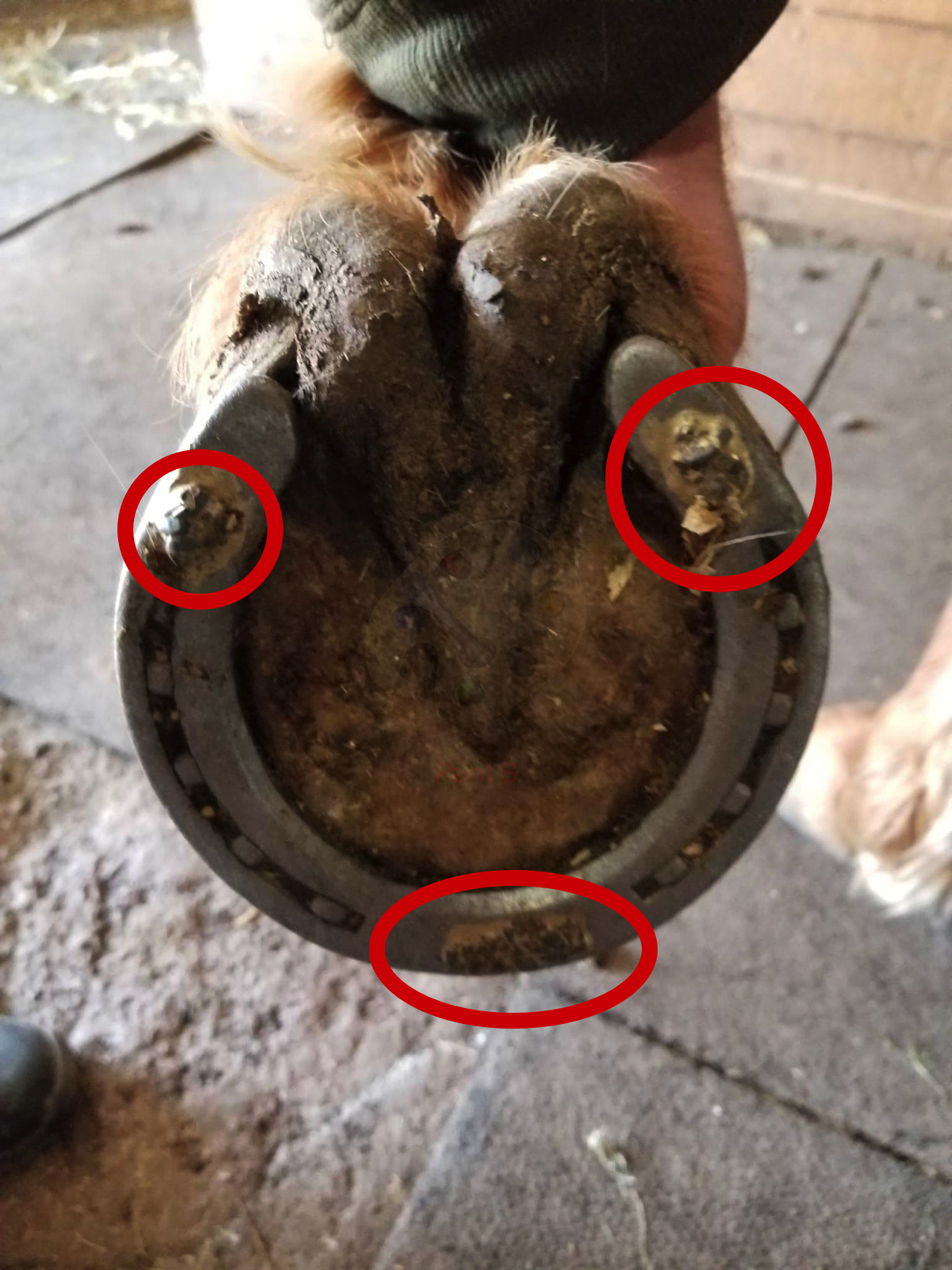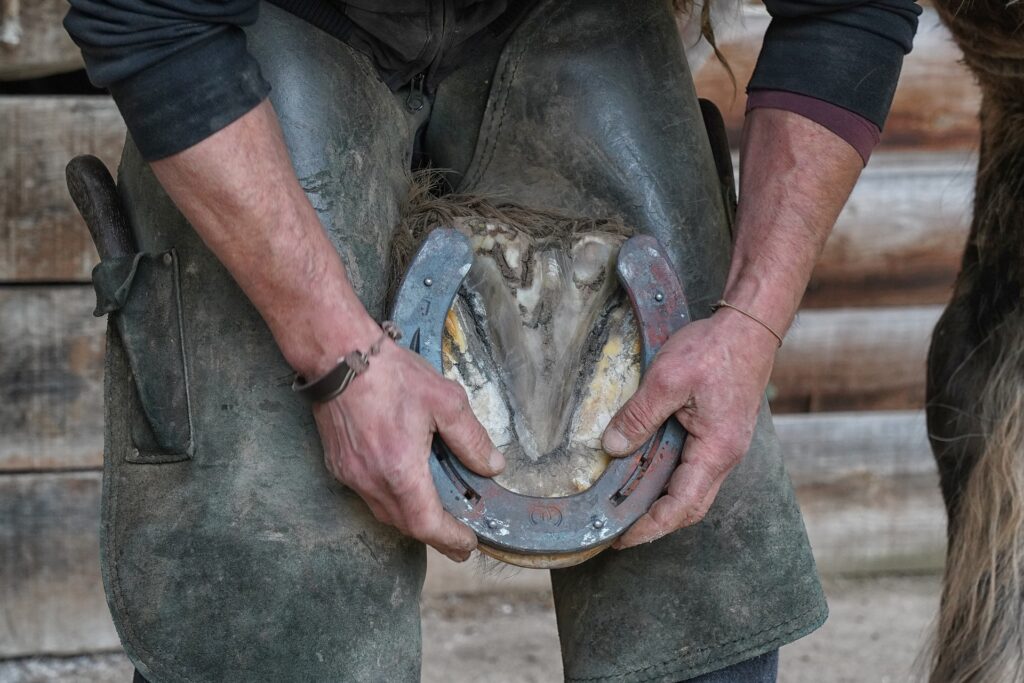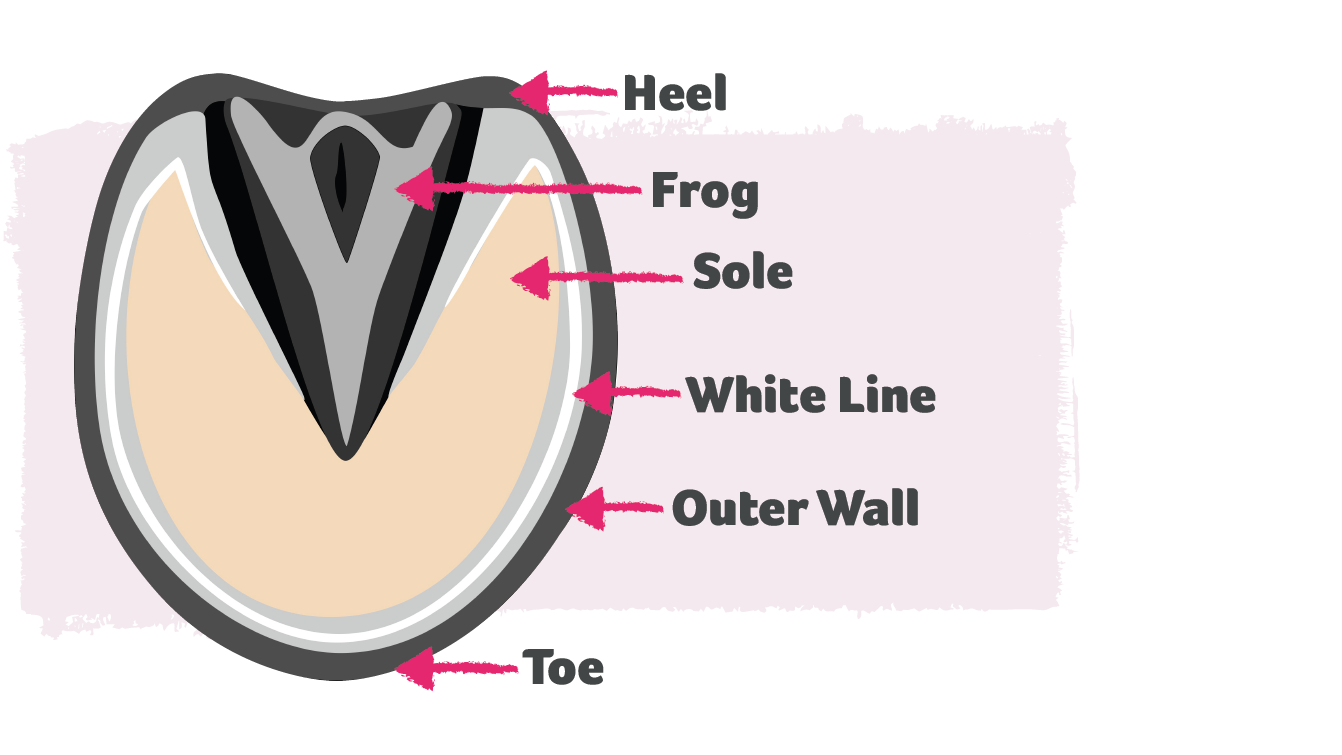When you think about footwear, the first thing that usually comes to mind is human shoes. However, in the world of horses, footwear plays a vital role too! If you’ve ever wondered why horses wear shoes, you’re not alone! This article delves into the fascinating world of equine footwear, exploring everything from the reasons horses are shod to different types of shoes, real-world applications, and even the pros and cons of shoeing.
Understanding Horse Hooves
The horse hoof is a complex structure designed to support the horse’s weight, absorb shock, and provide traction. Understanding the anatomy of a horse’s hoof is crucial to grasping why shoeing is often necessary. The hoof consists of several parts, including:
- The Wall: The outer part of the hoof that protects the inner structures.
- The Sole: The bottom part of the hoof that provides support.
- The Frog: A V-shaped structure that acts as a shock absorber and helps circulate blood in the hoof.
- The Digital Cushion: A fibrous tissue that further aids in shock absorption.
The Importance of Healthy Hooves

Maintaining healthy hooves is vital for a horse’s overall well-being. Regular hoof care, including trimming and, when necessary, shoeing, helps prevent problems such as cracks, stones bruising, and infections. Horses are like athletes; they rely on their feet to perform optimally, which makes hoof maintenance a priority!
Why Horses Wear Shoes: Key Reasons

Now that we have a basic understanding of the hoof’s structure let’s delve into why horses often need shoes. Here are some key reasons:
1. Protection from Hard Surfaces

Horses that work on hard surfaces, such as asphalt or concrete, can suffer from excessive wear and tear on their hooves. Shoes provide an extra layer of protection, ensuring that the hoof wall and sole remain intact, thereby minimizing the risk of lameness.
2. Improved Traction

Different surfaces provide varying levels of traction. Horseshoes, especially those designed with specific treads or spikes, can greatly enhance traction, especially in competitive environments, such as racing or jumping.
3. Corrective Measures

Some horses experience hoof deformities or imbalances that can affect their performance and comfort. Specialized shoes can help correct these issues, providing better alignment and support during movement.
4. Support for Specific Activities

Certain equestrian disciplines, such as dressage or barrel racing, may require horses to wear shoes designed for those specific activities. These shoes can enhance performance and increase the horse’s comfort during training or competition.
Types of Horseshoes

Horseshoes come in many varieties, each tailored for different needs and activities. Here’s a closer look at the most common types:
1. Standard Steel Shoes
These are the most common type of horseshoe. They provide durability and support and come in various sizes to fit different breeds. Steel shoes are great for everyday use, especially for riding and working horses.
2. Aluminum Shoes
Aluminum shoes are lighter than steel, making them ideal for racehorses where speed is crucial. They also distribute weight better, which can enhance a horse’s performance during races.
3. Therapeutic Shoes
These shoes are specially designed to treat specific hoof problems. For example, a horse with navicular disease might be fitted with a wedge shoe to alleviate pressure on certain areas of the hoof.
4. Glue-On Shoes
For horses that are sensitive to traditional nailing techniques, glue-on shoes provide an alternative. These shoes are attached using a strong adhesive, making them a great option for horses with compromised hooves.
Real-World Case Studies
To give you a better idea of how horseshoes impact the lives of horses, let’s explore a couple of real-world case studies.
1. Case Study: Racehorses and Aluminum Shoes
Many racehorses are fitted with aluminum shoes to enhance their performance. A prominent case is that of the famous racehorse Secretariat, who was known for his extraordinary speed. His trainer relied on lightweight aluminum shoes to give him an edge during races. This case exemplifies how specific shoe types can contribute to a horse’s success in competitive environments.
2. Case Study: Therapeutic Shoes for Recovery
A horse named Charlie suffered from chronic foot problems. His farrier recommended therapeutic shoes specifically designed to distribute weight more evenly across his hooves. After a few months of wearing these shoes, Charlie showed significant improvement in his comfort level and overall mobility. This case underscores the importance of choosing the right type of shoe based on the horse’s specific needs.
Comparison Table: Horseshoes at a Glance
| Type of Horseshoe | Material | Weight | Best For | Pros | Cons |
|---|---|---|---|---|---|
| Standard Steel Shoes | Steel | Heavy | Everyday use, working horses | Durable, affordable | Heavy, may cause fatigue |
| Aluminum Shoes | Aluminum | Lightweight | Racehorses, competition | Improved speed, lightweight | More expensive, less durable |
| Therapeutic Shoes | Varies | Varies | Horses with hoof issues | Customized support | Higher cost, may require more frequent changes |
| Glue-On Shoes | Composite materials | Lightweight | Sensitive horses | No nailing, less trauma to the hoof | May not be as sturdy, requires careful application |
Pros and Cons of Horseshoes
While horseshoes offer many benefits, they also come with some drawbacks. Understanding these can help horse owners make informed decisions about hoof care for their animals.
Pros of Horseshoes
- Protection: Shoes protect hooves from hard or sharp surfaces.
- Traction: Shoes enhance grip on various terrains.
- Performance: Shoes can improve a horse’s performance in competitive settings.
- Support: Therapeutic shoes can aid in recovery from hoof issues.
Cons of Horseshoes
- Cost: Horseshoes can be expensive, especially specialty types.
- Maintenance: Shoes require regular check-ups and adjustments.
- Hoof Health: Improper shoeing can lead to hoof problems if not done correctly.
- Dependency: Some horses may become reliant on shoes for support.
Tips for Maintaining Your Horse’s Hooves
Keeping your horse’s hooves healthy is crucial, whether they wear shoes or not. Here are some helpful tips:
1. Regular Trimming
If a horse is not shod, regular trimming helps maintain the hoof’s shape and health. Aim for every 6 to 8 weeks depending on the horse’s activity level and hoof growth.
2. Monitor for Signs of Lameness
Always keep an eye out for signs of lameness in your horse. If you notice any changes in their movement or the way they stand, it might be time to consult a veterinarian or farrier.
3. Choose the Right Shoes
Work closely with your farrier to determine the best type of shoes for your horse based on their activity level and any existing hoof conditions.
4. Maintain a Clean Environment
Keeping your horse’s living area clean can prevent hoof infections and other issues, ensuring their hooves stay healthy and strong.
Product Highlights: Best Horseshoes on the Market
Here are a few popular horseshoe products that have received great reviews from equine professionals:
1. Epona Easy Soaker Shoes
Great for horses needing a therapeutic soak, these easy-to-attach shoes are perfect for aiding in recovery from certain hoof conditions.
2. EasyCare Trail Gaiters
Perfect for trail riding, these lightweight hoof boots offer excellent protection and are easy to put on and take off, making them a favorite among riders.
3. Equipedic Therapeutic Shoes
Specifically designed for horses with various hoof issues, these therapeutic shoes provide targeted support and comfort.
Frequently Asked Questions (FAQs)
1. Do all horses need shoes?
No, not all horses require shoes. Many horses can thrive without them, especially those that are not used for heavy work or are kept on soft terrain.
2. How often do horses need shoes replaced?
Typically, horses need their shoes replaced every 6 to 8 weeks, but this can vary based on the horse’s activity and the type of shoes used.
3. Are there horses that cannot wear shoes?
Yes, some horses may have conditions that make it difficult for them to wear shoes, such as severe hoof deformities or chronic laminitis.
4. Can shoes cause hoof problems?
Improperly fitted shoes can lead to issues such as bruising, lameness, and other hoof problems. Regular checks by a qualified farrier can help mitigate these risks.
5. What are the signs my horse needs shoes?
Signs include excessive wear to the hooves, lameness, or difficulty on hard or slippery surfaces.
6. Can I put shoes on my horse myself?
It’s strongly recommended to have a professional farrier shoe your horse to ensure a proper fit and to avoid potential injuries.
7. How do I choose the right farrier?
Look for a farrier with experience in your specific type of horse and riding discipline. Ask for recommendations from other horse owners or trainers.
8. How do I care for my horse’s hooves?
Routine care includes regular trimming and cleaning while keeping an eye on any signs of lameness or hoof infections.
9. What types of shoes are best for my horse?
The best type of shoe depends on your horse’s activity level, hoof condition, and individual needs. Consulting with a farrier will help you make the best decision.
10. Can horses wear shoes in the winter on icy surfaces?
Yes, shoes with studs or special materials can provide better traction on icy surfaces, helping to prevent slips and falls.
Conclusion
In summary, horses wear shoes for a multitude of reasons, including protection, traction, and support. While shoeing is an essential part of hoof care for some horses, it’s not a one-size-fits-all solution. Each horse has unique needs that should be addressed in consultation with a professional farrier. Understanding the benefits and challenges of horseshoes can empower you as a horse owner to make informed decisions for your equine friend.
Whether you’re a seasoned equestrian, a horse enthusiast, or simply a curious observer, this comprehensive guide to equine footwear has hopefully shed some light on the important role horseshoes play in a horse’s life. After all, just like humans, horses deserve the best care for their feet!